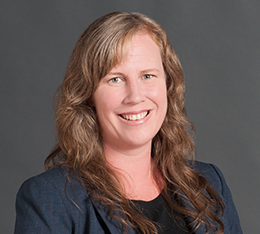California’s community colleges are the largest providers of workforce training in the state, offering a wide variety of career technical education (CTE) programs. Career training in health is particularly promising for students, as the health industry offers many in-demand, well-paying jobs for Californians with less than a bachelor’s degree. Health programs have higher completion rates than other CTE programs and attract a large and diverse student population. But gaps in achievement across student groups are a persistent problem.
PPIC’s latest report on career technical education in health provides detailed insights into the nature of equity gaps in student achievement. African American students are nearly 12 percentage points less likely to complete a health credential than their white peers. Latino students are about 6 points less likely.
To better understand racial/ethnic achievement gaps—and identify potential solutions—we examined three possible explanations: socioeconomic factors, program choice, and course-taking patterns. Individual demographic factors like age, immigration status, and economic disadvantage do matter, but cannot explain away the achievement gap. A student’s choice of health program also matters—that is, African American and Latino students are less likely to be enrolled in the health CTE programs with the highest completion rates, such as registered nursing and dental hygiene. But even after for controlling for socioeconomic factors and program choice, the racial/ethnic achievement gap persists (7 percentage points for African American students and 3 percentage points for Latino students).
By far the most consequential factor driving the racial/ethnic achievement gap in health programs is course-taking patterns—in particular, course progression patterns that are linked to student success. African American and Latino students are less likely to enroll full-time or in consecutive terms—these two patterns are strongly related to college completion. In addition, they are less likely to complete 30 or more units before entering the health program, another factor linked to future success. Finally, compared to white students who are otherwise similar, African American and Latino students are less likely to receive financial aid. Simply put, we find that if students entered similar programs and made similar progress course by course, the racial achievement gap would disappear.
These results suggest that there are many steps community colleges can take to alleviate completion gaps. In fact, systemwide efforts to support full-time attendance to and to guide students on choosing a program of study are among the reforms implemented through the Student Success effort in recent years. Our results suggest that efforts to enable underrepresented students to devote more time to their courses of study and pick up momentum toward their educational goals will do the most to reduce completion gaps. More information about the programs with the best completion rates and earnings potential can empower students to decide which career pathways to pursue. By identifying and addressing the drivers of inequity in CTE—in health as well as other programs—colleges can help more students take the crucial first step of earning a credential and then move along well-paying career pathways.
Read the report Career Technical Education in Health: An Overview of Student Success at California’s Community Colleges
Visit the PPIC Higher Education Center



